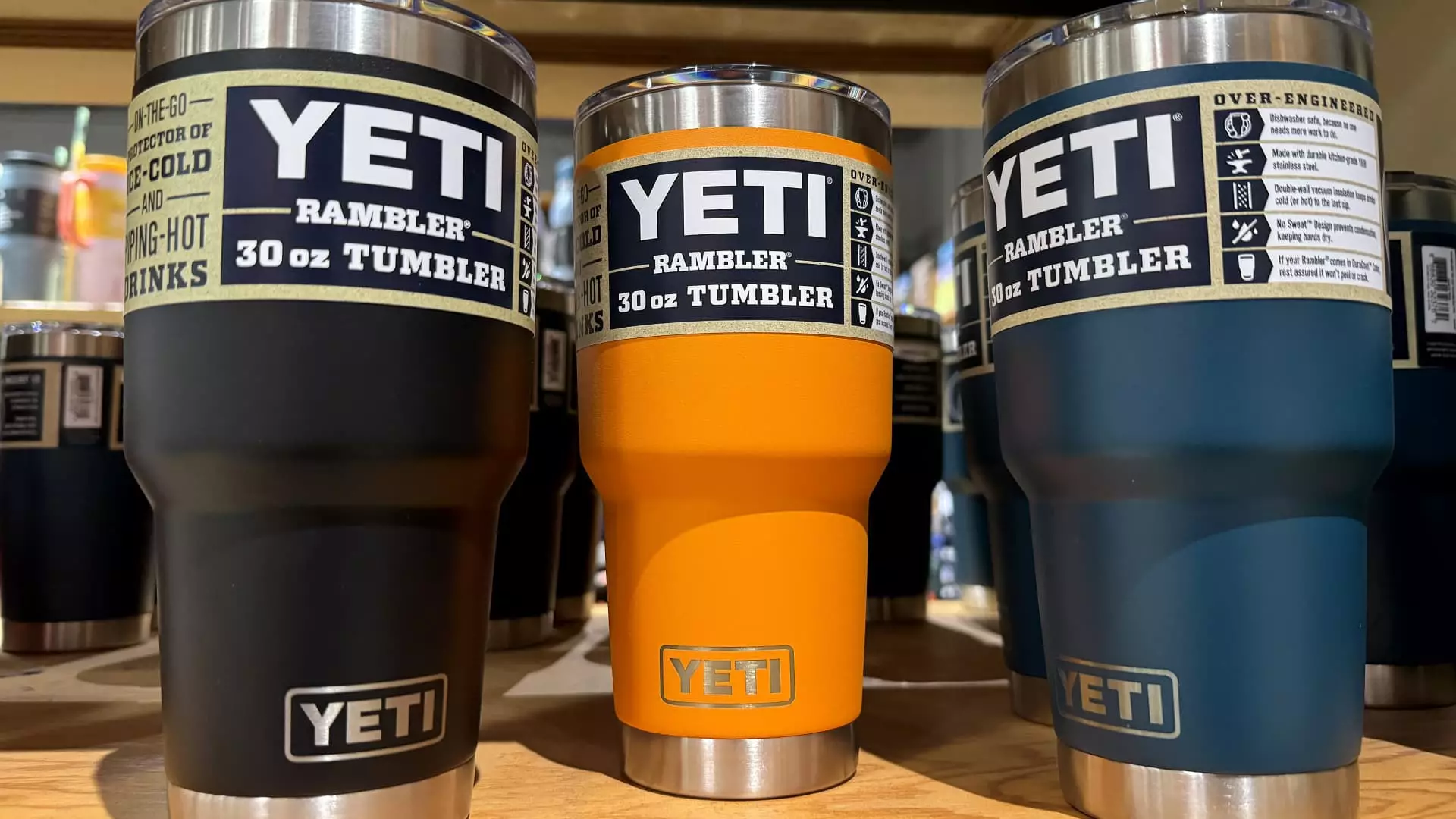Yeti Holdings Inc. has carved a noteworthy niche in the outdoor product marketplace, generating a brisk business with stylish, premium coolers and drinkware. Known for its cult-like customer loyalty, the company has impressed both outdoor enthusiasts and casual users alike, leading to a brand synonymous with quality and class. Currently valued at around $2.5 billion, Yeti’s stock sits at a languid $30.15 per share, a far cry from its peak of $108 in November 2021. At first glance, this decline might suggest a downward spiral, but in reality, it signals a significant opportunity for investors with an eye for long-term growth.
The last twelve months have been bleak for Yeti, with a growth rate halting at just 3.98% in 2023. Yet, behind this façade of stagnation lies dormant potential. As global consumer habits shift towards outdoor activities, the timing couldn’t be better for Yeti to reignite its growth trajectory.
Boardroom Shake-Up: The Catalyst for Revival?
A new wave of optimism follows Engaged Capital’s recent partnership with Yeti. Engaged Capital, recognized for its activist investing strategies, has imposed a refreshing directive by pressing for more dynamic governance at Yeti. With a cooperation agreement that includes expanding the board to ten directors and appointing experienced professionals like Arne Arens and J. Magnus Welander, this shrewd move encapsulates the shift in dynamics needed for Yeti to thrive once more.
The appointments are more than just additions; they symbolize a commitment to growth and innovation. Engaged Capital’s success track record, with average returns significantly outpacing the consumer discretionary sector, speaks volumes. Hence, the dialogue between the company and this activist investor is not merely procedural; it is a clarion call for Yeti to capitalize on market prospects that remain largely unexplored.
Untapped Markets: The European and Asian Frontier
Expansion into foreign markets is crucial for revitalizing Yeti’s stagnant growth. While the company has enjoyed success in Canada and Australia, Europe and Asia present fertile ground for exploration. With a brand poised to attract international markets due to its established value proposition, Yeti has an opportunity to significantly upscale its operations. People worldwide are increasingly drawn to outdoor adventures, and with distinctive product expertise in insulation and moisture protection—Yeti can emerge as a frontrunner in the outdoor equipment landscape.
Moreover, cultural nuances and preferences play an inherent role in product integration within different markets. Yeti’s adaptability in design and marketing strategies must align with the characters of these new audiences for the brand to resonate effectively.
Diversification: Beyond Coolers and Drinkware
To truly harness the future potential, Yeti must also look beyond its existing product lines. The current portfolio encompasses mainly drinkware, coolers, and some apparel—an area where diversification can serve not just as a hedge, but as a catalyst for revitalization. Consider the possibilities in the luggage and camping gear markets, where Yeti can leverage its technological edge in insulation and moisture-proofing to create must-have products for outdoor enthusiasts.
This diversification strategy must be pursued proactively. The outdoor market is ripe for innovation; simply having a solid product line isn’t enough. Companies like SharkNinja have shown that consistent innovation complemented by targeted marketing can lead to substantial financial success. Yeti must mirror this business acumen, turning the awareness gained through existing products into impactful growth initiatives in new categories.
The Communication Gap: A Call for Transparency
Despite its brand strength, Yeti faces a critical communication gap with its investors. Historically, the company has largely avoided the spotlight when it comes to investor relations; no investor days or substantial outreach at conferences have left the market uncertain of Yeti’s long-term vision.
To attract renewed market interest, Yeti must shift gears and become more forthcoming about its product roadmap and mid-term targets. Investor relations need to be redefined, creating avenues for dialogue that can enhance investor confidence as well as bring clarity to its business objectives. A model for this can be seen with successful household names that prioritize transparent communication strategies, resulting in soaring share valuations.
Financial Backbone: The Power of Cash Reserves
Yeti’s financial health paints a promising picture. With $280 million in net cash and nearly $300 million in EBITDA, the company possesses the leverage to engage in significant capital allocation strategies. The current low valuation relative to historical norms provides an opening for Yeti to consider share buybacks, thereby enhancing shareholder value while simultaneously indicating confidence in its future growth potential.
As Yeti strategizes to reinvigorate its operational efficiency, utilizing cash-on-hand to not just remain afloat, but to empower the momentum towards doubling its market cap becomes an essential discussion.
It would be shortsighted to see Yeti simply as a stagnant player in a tough market. With new governance, untapped opportunities for geographic and category expansion, and a strategic approach to communicate with its investor community, Yeti is not just a brand with a future; it’s a goldmine waiting to be unearthed.

